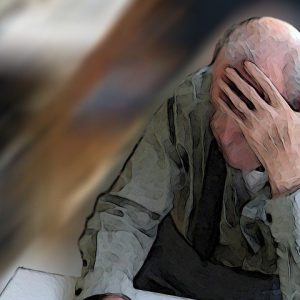Paying for Long Term Care in the U.S.- How Did We Get Here?
By Laura Calderon
There are four sources for paying for long term care (chronic illness) in the United States: a Medicare benefit that is limited to rehabilitation, Long Term Care insurance, private payment and the Medicaid program. The system is not designed to assist the majority of Americans, even the aged and disabled, with the health care costs associate with long term care, even though Medicare is a comprehensive health insurance program for persons over 65 and persons with disabilities. How did we get here?
In the Declaration of Independence, Thomas Jefferson write that all authority given to government derives from the “consent of the governed”. And in Article I of the Constitution of the United States, the founding fathers write that no money should be taken from the federal treasury unless there was a law permitting the expense. We can spend tax dollars on health care if we direct our elected representatives to pass laws allowing such expenditures. Before 1900, there were very few laws that allowed tax dollars to be spent on health care.
The industrial revolution gave rise to the concept of government payment for health care. Workers in factories were being injured on the job, and needed relief. Medicine began making advances in curing illness, and those advances included costly research, and thus more expensive health care. The American Association of Labor Leaders (AALL) began the first initiative for health care coverage between 1905 and 1915 when it went state by state to pass laws relating to worker’s compensation. The AALL was at the forefront when consideration of national health insurance was first raised in 1915. By that time, both Germany and England had passed national health care laws. The first bills called for cash compensation and broad hospital and medical coverage for workers and for their dependents. The model legislation was well received when it was introduced, and had the endorsement of the American Medical Association.
But within a short time, the proponents of National Health Insurance became fractured. Doctors differed about whether they wanted tax dollars spent for direct care, or for research. Insurance companies and pharmaceutical representatives worried about the effect of government payments on their businesses. And politicians were unsure about the attitudes of the general public and whether national health care was really “American” – was it too much government activism? Should we just let the free market system and the principles of laissez faire proceed without encumbrance? Is health care a national issue, or one for states? And didn’t Americans really believe in a certain amount of social Darwinism: social survival of the fittest?
The debate continued throughout the 1920’s, as more than one-half of the country was living in poverty and workers’ rights groups grew in size and influence. In 1927, the Committee on the Cost of Medical Care was created. The panel, comprised of government leaders and physicians, concluded that a majority of Americans were not receiving adequate health care. But they did not recommend national health insurance, advising that tax incentives and private insurance would be a better system.
The demand for government assistance continued and grew as the impact of the Great Depression spread into every valley and hillside. But fears of a too powerful, too intrusive government remained. When Franklin Roosevelt signed the Social Security Act into law in 1935, it did not include a health care component, despite strong pressure from proponents. The SSA focused on giving economic security to the “aged” (65 was statistically quite old at the time) and in 1959, to persons with disabilities.
The debate about health care coverage did not wane. After the end of WWII, President Truman asked Congress to consider a national health insurance bill. The same interests – consumers, workers, medical providers, insurers, pharmaceutical companies and politicians, continued to squabble. Although President Eisenhower didn’t favor national health care coverage, several proposal arose in the 1950’s. Gradually, it became more politically acceptable to focus on universal coverage for the aged; in 1960, the Republican party promoted a concept of coverage for poor women and children. In 1965, President Johnson signed into law a hallmark of his Great Society: Medicare (health insurance coverage for all Americans over age 65, with few limitations) and Medicaid (an eligibility based program for the poor and disabled). President Harry Truman, present at the bill signing, became the first Medicare recipient. The Older Americans Act was also created within the Great Society, providing funding for aging services and research.
In 1965, after more than 50 years of discussion, the national health insurance debate was “answered” by these uniquely American program. However, at the time, few Americans lived in nursing homes, and most homes were privately funded, often by not-for-profits. Pharmaceutical costs averages less than $10 per year per American. Technological advances in medicine which would result in expanded life expectancies and skyrocketing costs were not yet within our vision. Predictably, the debate didn’t die, but remains with us to this day. The need for long term care, and the LTC industry, have grown dramatically as the incidence of chronic illness such as dementias, Parkinson’s disease, lung disease, diabetes and others have risen with our ever older population. Payment for nursing home care, assisted living, home health, respite and supervision were not addressed in 1965, but rising costs are devastating to those now affected.
Coming full circle, there is still no Medicare-style coverage for a progressive illness as there is for the debilitating diseases of heart disease, kidney failure and cancer, most of which are covered under the Medicare program. Finding affordable and equitable solutions has been as difficult a process as that experienced in the 50 years before the Great Society. But clearly, without relief, the long term economic and personal impact of the cost of long term care will weigh heavily on middle class America. The debate, continues. It’s important to know where your elected representatives stand on these issues, and to communicate your own views to them. After all, our nation continues to be called to respond to “the consent of the governed”.



